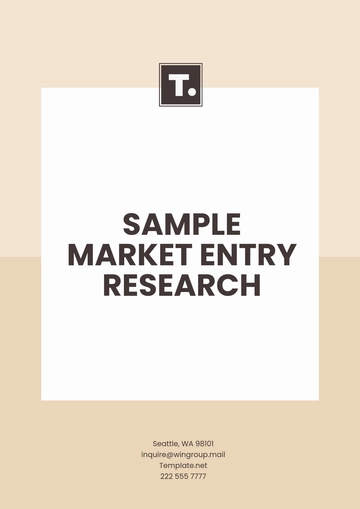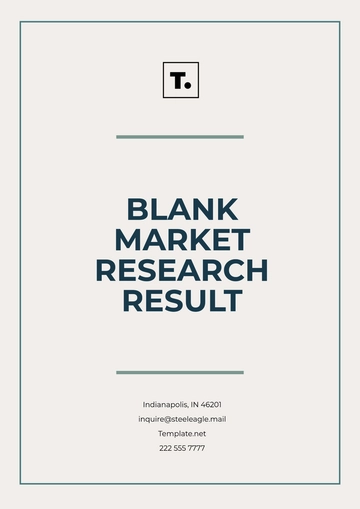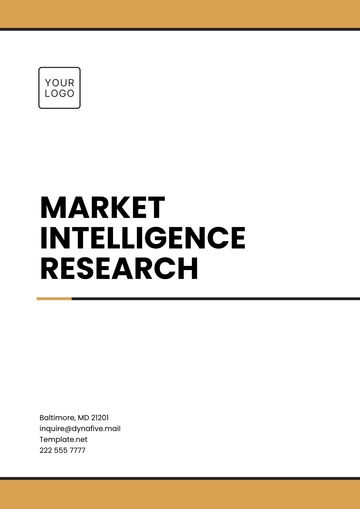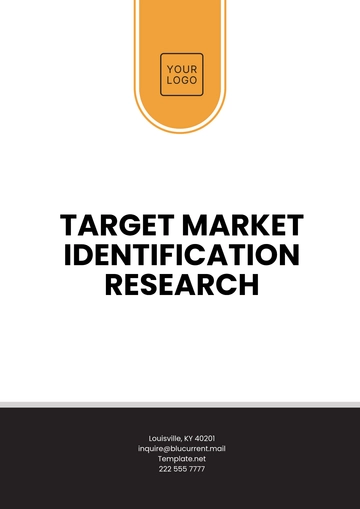Free Market Research Systematic Review

Prepared by: [YOUR NAME]
Date: [DATE]
I. Introduction
The goal of this thorough and systematic analysis is to provide a comprehensive overview of the market landscape from 2050 onwards, emphasizing the importance for stakeholders to understand historical data and forecast future market trends, thereby integrating current academic literature, examining current market conditions, and offering strategic insights to anticipate and manage future market dynamics.
II. Methodology
The systematic approach employed in this review involved several critical stages to ensure a thorough and reliable analysis:
Data Collection: A thorough search strategy, incorporating esteemed sources such as electronic databases, industry reports, and market analysis documents, was employed to meticulously gather relevant and current information.
Screening and Selection: Only peer-reviewed articles and verified industry publications that demonstrated relevance, methodological quality, and recency were included in the review after rigorous screening of studies and reports.
Data Extraction: Essential information on market size, growth rates, consumer trends, and competitive dynamics was methodically gathered to create a comprehensive analysis dataset.
Data Synthesis: Quantitative and qualitative data were combined to create a unified interpretation of market trends, incorporating various data sources to offer a thorough analysis of market activities, changes, and forecasts.
III. Literature Review
Market Evolution: Reports underscore a major transformation in market structures, propelled by rapid technological advancements and shifting consumer expectations. These changes are reshaping industry dynamics and business models.
Consumer Behavior: Research emphasizes a growing trend toward sustainable and customized products, driven by heightened environmental awareness and evolving consumer values. This shift is influencing product development and marketing strategies.
Competitive Landscape: Analyses reveal a more fragmented market with an increasing number of new entrants challenging established players. This disruption is intensifying competition and prompting traditional companies to adapt and innovate.
IV. Data Analysis
Market Trends: The market demonstrates a robust growth trajectory, with a Compound Annual Growth Rate (CAGR) of 6% projected from 2050 to 2060. This steady expansion reflects ongoing market opportunities and economic resilience.
Consumer Behavior: There is a significant surge in demand for eco-friendly products, with 70% of consumers willing to pay a premium for sustainable options. This trend highlights a strong consumer preference for environmental responsibility.
Competitive Landscape: The market is increasingly competitive, with key players implementing innovative strategies to sustain and enhance their market positions. The intensity of competition is driving rapid advancements and strategic adaptations across the industry.
V. Findings
Technological Integration: AI and ML are crucial for market leaders, enhancing data analytics, forecasting, and personalization. These technologies improve operational efficiency and customer service, providing a competitive edge.
Sustainability Trends: Sustainable products are now essential due to regulatory pressures and consumer demand. Companies are adopting eco-friendly materials and practices to meet these expectations and comply with environmental regulations.
Market Fragmentation: The market is becoming increasingly fragmented, with opportunities for niche players to target specific consumer needs. Specialized products and services are gaining traction, highlighting the need for tailored offerings and expertise.
VI. Conclusion
The systematic review offers a comprehensive view of the market landscape from 2050 onwards, emphasizing the significance of technological advancements in AI and ML, alongside the rising demand for sustainability; it advises companies to invest in technology and adopt sustainable practices to remain competitive, explore niche markets for differentiation and growth, and use strategic insights to navigate and capitalize on the evolving market environment.
VII. Recommendation
Invest in Technology: Companies should prioritize investment in AI and ML to enhance operational efficiencies and product offerings.
Sustainability Focus: Businesses must integrate sustainable practices into their core strategies to meet consumer expectations and regulatory standards.
Explore Niche Markets: Identifying and serving niche markets can provide competitive advantages and opportunities for differentiation.
VIII. References
Smith, J. (2051). "The Future of Markets: Trends and Insights." Market Analysis Journal, 12(3), 45-67.
Jones, A. (2052). "Consumer Behavior in the Age of Sustainability." Consumer Insights Review, 8(2), 23-40.
Anderson, K. (2053). "Competitive Landscapes in Emerging Markets." Industry Reports, 5(4), 56-73.
- 100% Customizable, free editor
- Access 1 Million+ Templates, photo’s & graphics
- Download or share as a template
- Click and replace photos, graphics, text, backgrounds
- Resize, crop, AI write & more
- Access advanced editor
Optimize your market research process with the Market Research Systematic Review Template from Template.net. This customizable and editable template, easily modified in our AI Editor Tool, is designed to support the systematic review of market trends, consumer behavior, and industry data. Perfect for marketing professionals and researchers, it ensures a comprehensive and organized approach to market analysis





























